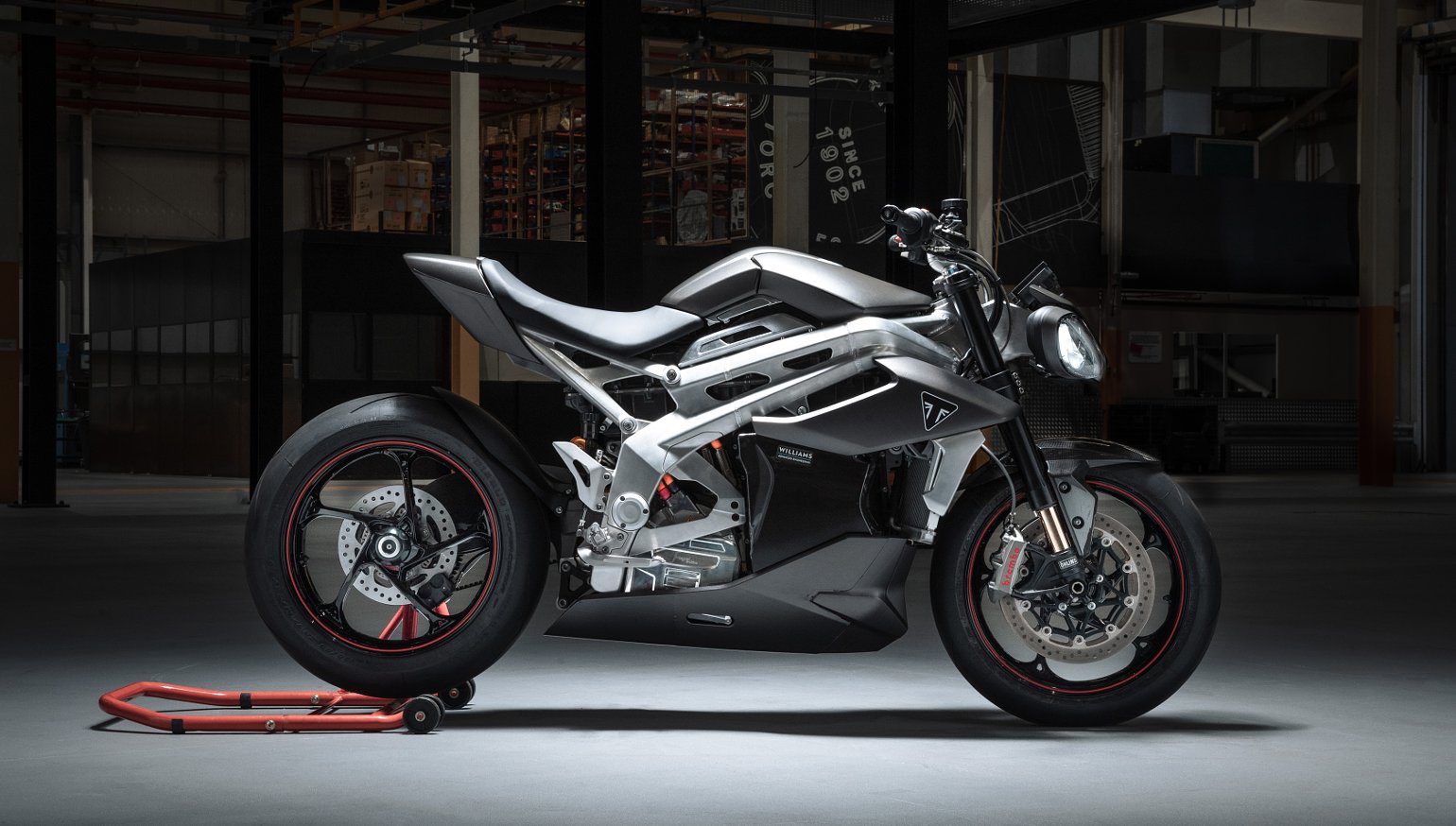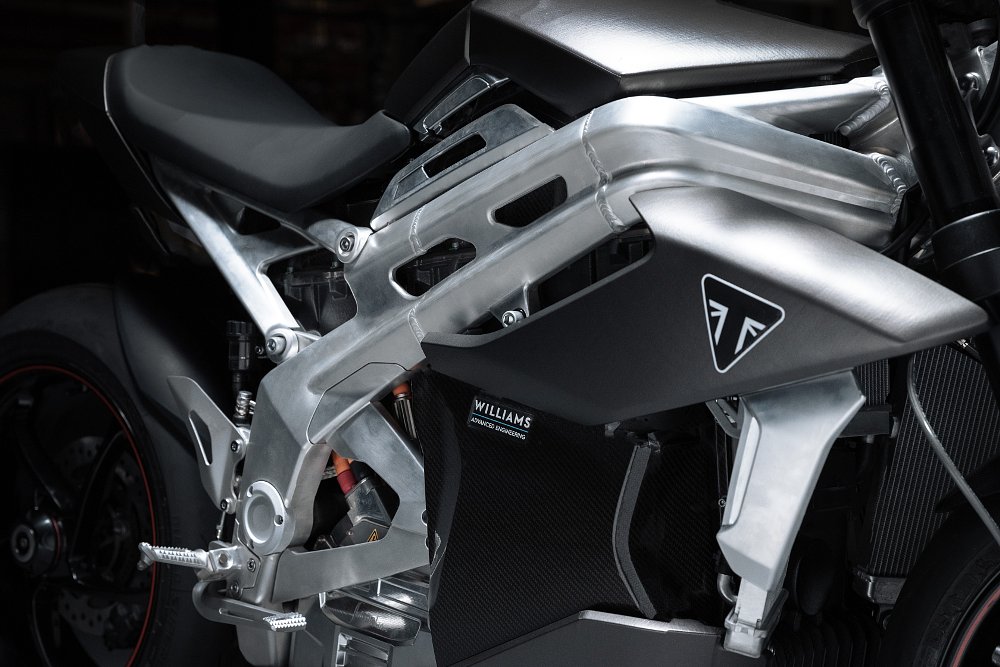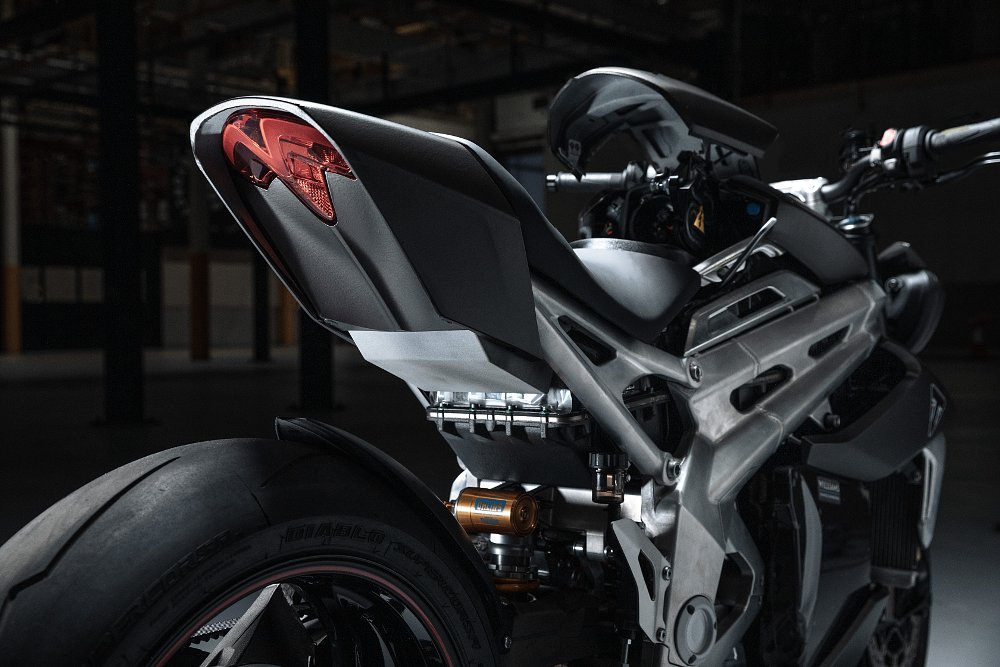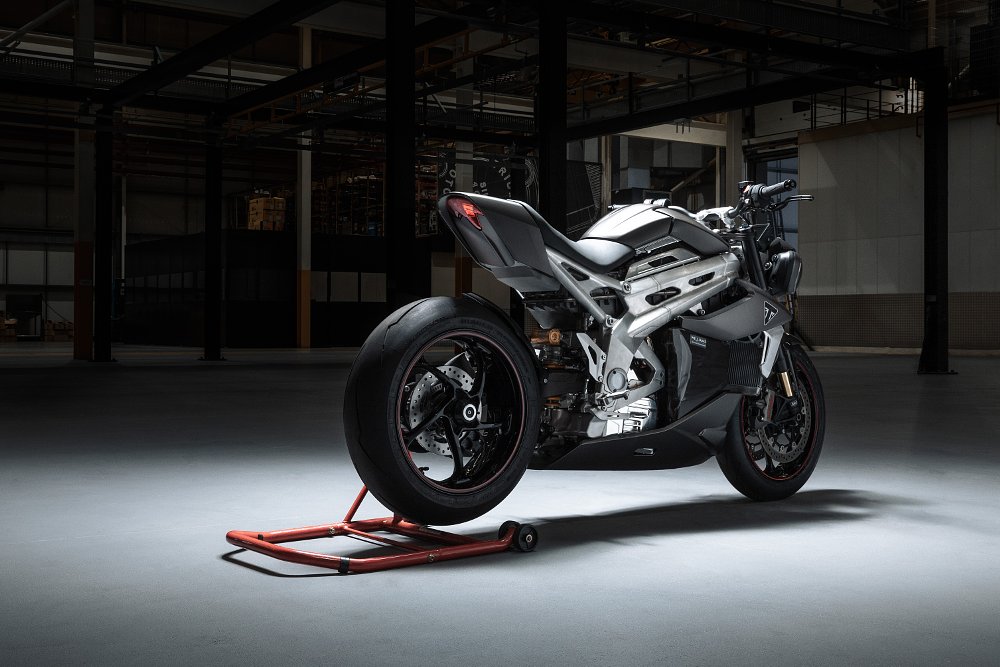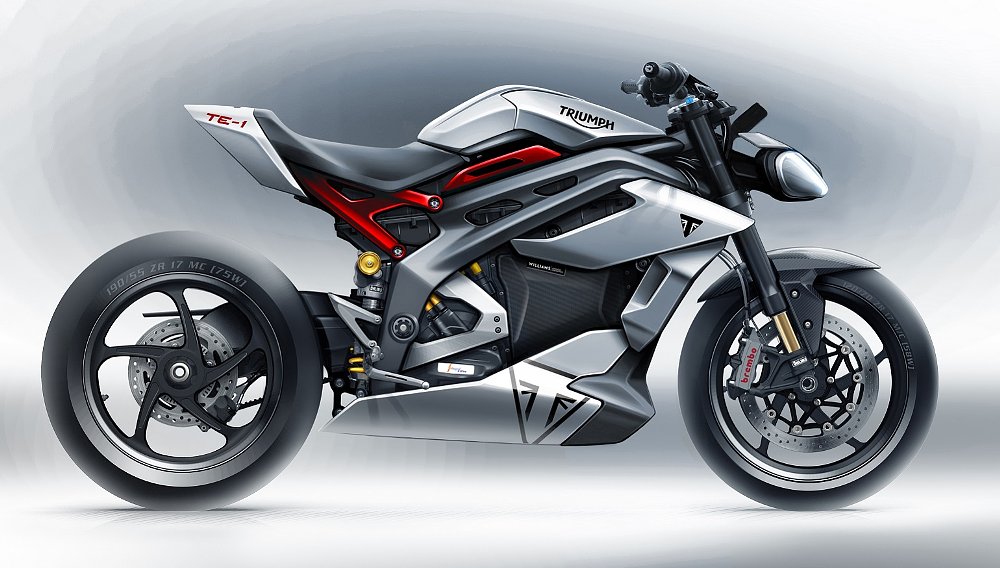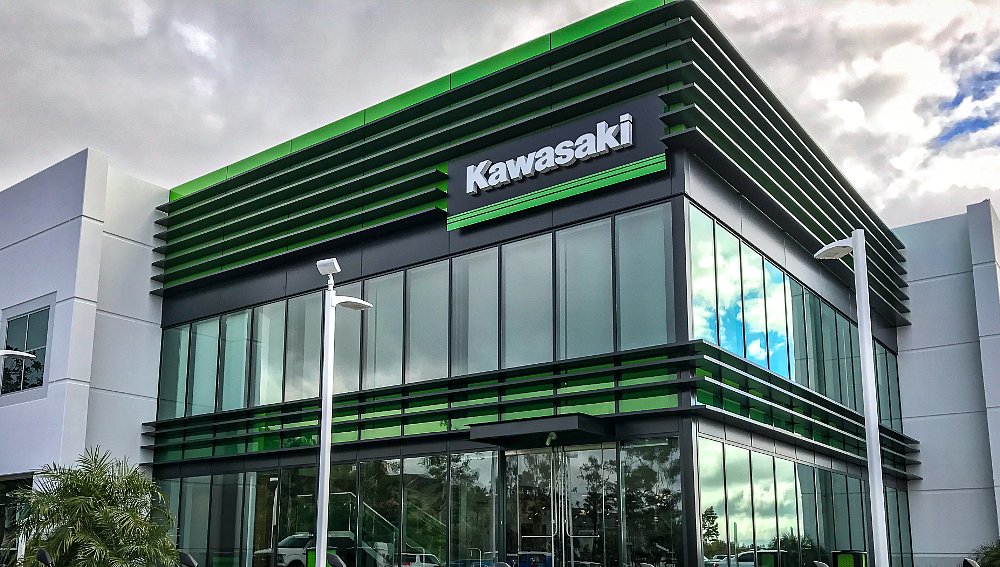Triumph is racing to develop an electric motorcycle, and today, their secretive “TE-1” project reached a major milestone.
Their final prototype, built in collaboration with Williams Advanced Engineering, Integral Powertrain Ltd, and WMG at the University of Warwick, is complete. In the next phase, the TE-1 prototype will undergo testing to determine its real-world performance. TE-1’s objectives are:
- developing electric motorcycle capability
- [providing] an input into Triumph’s future electric motorcycle offering
- driving innovation, capability, and new intellectual property
- enhancing the credibility and profile of British industry and design
Before today, Triumph hadn’t released much information about its electric endeavor, but we can find some big hints in their new report on prototype progress. Triumph worked on the “final chassis… final drive system including transmission and Gates Carbon belt drive, electronics, Öhlins USD cartridge forks, unique prototype Öhlins RSU, Brembo M50 monobloc calipers, and Triumph motorcycle control software.” The parts selections suggest a sporty machine with performance to rival Triumph’s naked triples. Belt drive would be a big departure from those models, though.
Williams Advanced Engineering worked on the “battery pack incorporating dedicated cell packaging for optimum center of gravity, vehicle control unit, DCDC converter, integrated cooling, charge port, and styled carbon covers.” Williams brings plenty of motorsport experience to the table, including Formula E, so they made a natural partner for Triumph on this project.
Integral Powertrain provided (you guessed it) the final prototype powertrain, and WMG/University of Warwick provided simulation testing for the group’s efforts, from tracking the performance of the test rigs, to modeling the future of the electric motorcycle industry.
“WMG has also been helping Triumph understand the opportunities and wider implications of electrification towards their business,” said Jim Hooper, Principal Engineer of Electric Vehicle Projects at WMG, University of Warwick. “This has included investigating the opportunities for electric two-wheeler charging networks, the need for domestic electric motorcycle recycling, the necessity to develop local battery supply chains and the direction that Triumph will need to take [to build more electric motorcycles] in the future. The team can also quantify the environmental impact of an electric motorcycle, which will be key information for production models.
Testing will run for six months of intensive study, with the phase’s expected completion set for summer of this year. “Our experience tells us that at this stage of a project there is no substitute to genuinely riding a bike when developing driveability, handling, and character,” said Steve Sargent, Triumph’s Chief Product Officer. “We have ambitious targets focused on delivering a riding experience that is new and exciting, but ultimately intuitive and familiar. I am really looking forward to my first opportunity to ride the completed prototype.”
Common Tread has spilled plenty of digital ink on new and upcoming electric motorcycles. Only a handful of these vehicles come from established manufacturers, and even those are a mixed bag. Neither Kawasaki’s continued teasing of electrification, nor Harley-Davidson’s release of the $30,000 LiveWire (now the $22,000 LiveWire ONE) do much to move the needle of public interest in electric motorcycling. And startups hawking vaporware for venture capital, only to never deliver, actively hurt the reputation of electric motorcycling.
Triumph seems determined to deliver a viable electric motorcycle in the near future. Maybe they’ll avoid Kawasaki’s unending flirtation and Harley-Davidson’s “halo bike” pricing as they develop an electric platform of their own. Building an electric motorcycle with wide appeal has proven to be a challenge for every company that has attempted it. And the outright silence from some major manufacturers on electrification suggests the current wisdom: Having nothing to show must be better than delivering a disappointment.

 Membership
Membership

